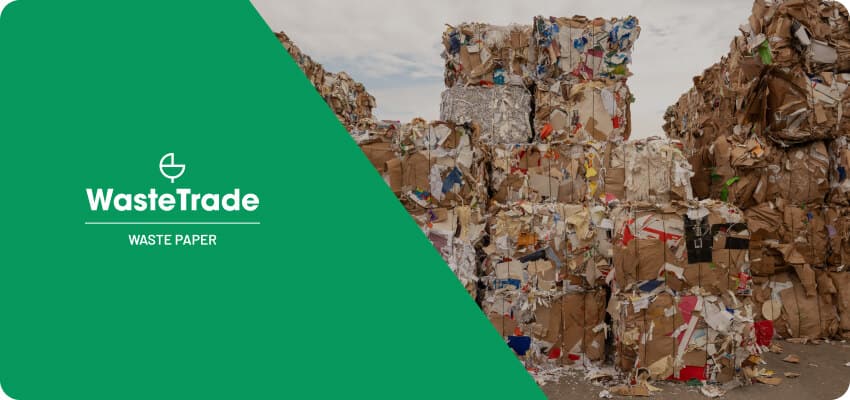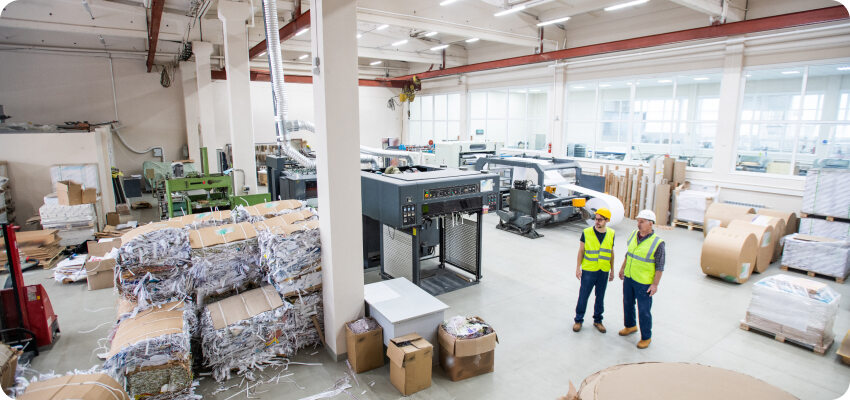Waste Paper

The proliferation of paper in the business world is undeniable. From office memos to packaging materials, paper forms a significant part of business operations. However, with the increasing push towards sustainability, managing waste paper efficiently has become a key concern for many enterprises. Addressing the waste paper issue is not only an environmental responsibility but can also offer economic advantages to businesses when approached correctly.
Paper Waste

For businesses, paper waste can accumulate at a staggering rate. Daily operations, from printing reports to packaging products, contribute significantly to this pile. While households also contribute to paper waste, it’s the commercial sectors that are the prime producers. The challenge for businesses is two-fold: firstly, to reduce the production of paper waste by adopting sustainable practices, and secondly, to manage the waste generated in an environmentally responsible manner.
Waste Paper Recycling

Recycling is the cornerstone of waste paper management for businesses. Many companies have recognised the potential benefits of recycling, not just from an environmental standpoint, but also in terms of cost savings. Waste paper recycling allows businesses to convert their paper waste into reusable material. This not only reduces the demand for virgin paper, decreasing deforestation, but also means businesses can potentially recoup some of their expenses by selling the recycled paper. Moreover, with dedicated waste paper recycling facilities, businesses can ensure that their waste is processed efficiently, supporting a circular economy.
Paper Waste Recycling

Recycling paper waste is a methodical process designed to convert discarded paper into usable raw materials. For businesses that generate significant amounts of paper waste, understanding this process can be enlightening and serves as a testament to the importance of responsible waste management.
1. Collection and Transportation: Initially, businesses gather paper waste and segregate it from other types of waste. This segregated waste is then transported to dedicated recycling facilities. The quality of paper collected plays a pivotal role in the recycling process, so businesses are encouraged to ensure minimal contamination.
2. Sorting and Grading: Upon reaching the recycling facility, the paper waste is sorted based on its type and quality. Common categories include newspapers, corrugated boxes, magazines, and office paper. Each type has a different fibre length, affecting its recycling potential.
3. Pulping: The sorted paper is then subjected to a pulping process. It’s mixed with water and chemicals, turning it into a slurry-like consistency. This pulp contains individual paper fibres, along with ink and other unwanted elements.
4. De-inking: To ensure the recycled paper’s quality, the pulp undergoes a de-inking process. This involves removing the ink, glue, and other contaminants from the pulp, usually through a combination of chemicals, air bubbles, and washing.
5. Refining and Bleaching: The cleaned pulp is then refined, which involves further breaking down the fibres to prepare them for the paper-making process. If the goal is to produce white paper, the pulp might also be bleached using hydrogen peroxide or other environmentally-friendly chemicals.
6. Paper Formation: The refined pulp is then spread onto large screens, allowing the water to drain and the paper fibres to bond. As the water drains, these fibres intertwine, forming sheets of paper.
7. Rolling and Drying: The sheets are then passed through large heated rollers to remove any remaining moisture, resulting in the formation of rolls of paper.
8. Cutting and Packaging: Finally, these rolls are cut into desired sizes, packaged, and are ready to be sent back into the commercial world.
For businesses, knowing this intricate process underscores the importance of recycling. It’s not just about environmental responsibility; it’s about understanding the journey of waste paper as it’s transformed back into a valuable resource.
Waste Paper

In the business realm, waste paper is more than just discarded material. It represents an opportunity. Whether it’s repurposing it, recycling it, or selling it to dedicated facilities, there are several avenues businesses can explore. By actively managing their waste paper, businesses not only contribute to environmental conservation but also position themselves as responsible and forward-thinking entities. This proactive approach to waste paper can set businesses apart, making them more appealing to partners, clients, and stakeholders who value sustainability.
